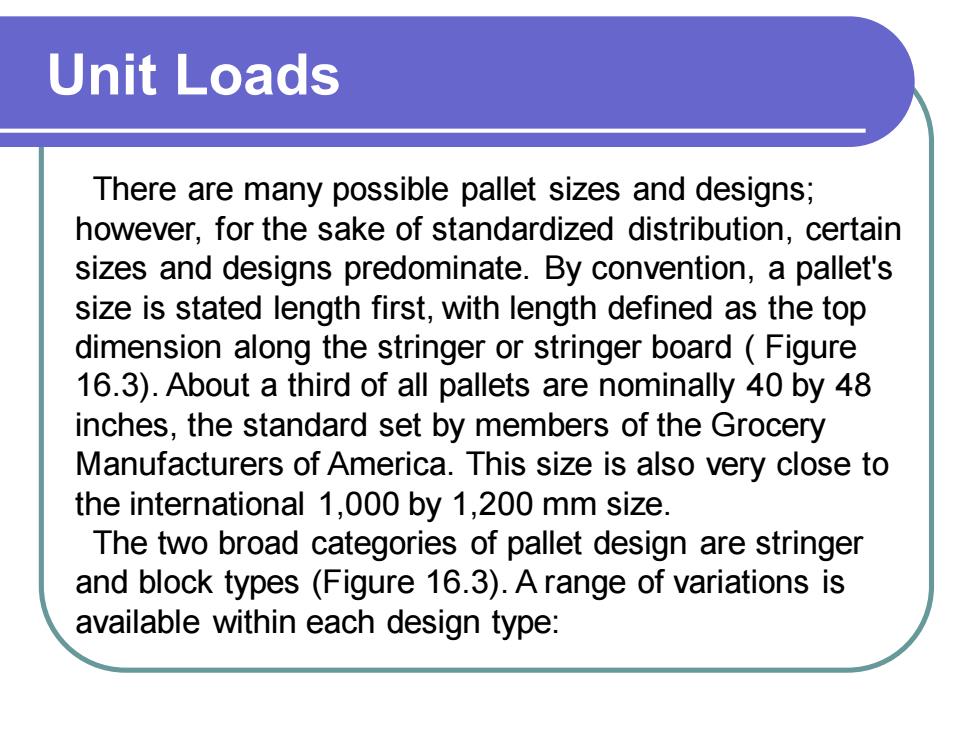正在加载图片...

Unit Loads There are many possible pallet sizes and designs; however, for the sake of standardized distribution, certain sizes and designs predominate. By convention, a pallet's size is stated length first, with length defined as the top dimension along the stringer or stringer board ( Figure 16.3). About a third of all pallets are nominally 40 by 48 inches, the standard set by members of the Grocery Manufacturers of America. This size is also very close to the international 1,000 by 1,200 mm size. The two broad categories of pallet design are stringer and block types (Figure 16.3). A range of variations is available within each design type:Unit Loads There are many possible pallet sizes and designs; however, for the sake of standardized distribution, certain sizes and designs predominate. By convention, a pallet's size is stated length first, with length defined as the top dimension along the stringer or stringer board ( Figure 16.3). About a third of all pallets are nominally 40 by 48 inches, the standard set by members of the Grocery Manufacturers of America. This size is also very close to the international 1,000 by 1,200 mm size. The two broad categories of pallet design are stringer and block types (Figure 16.3). A range of variations is available within each design type: